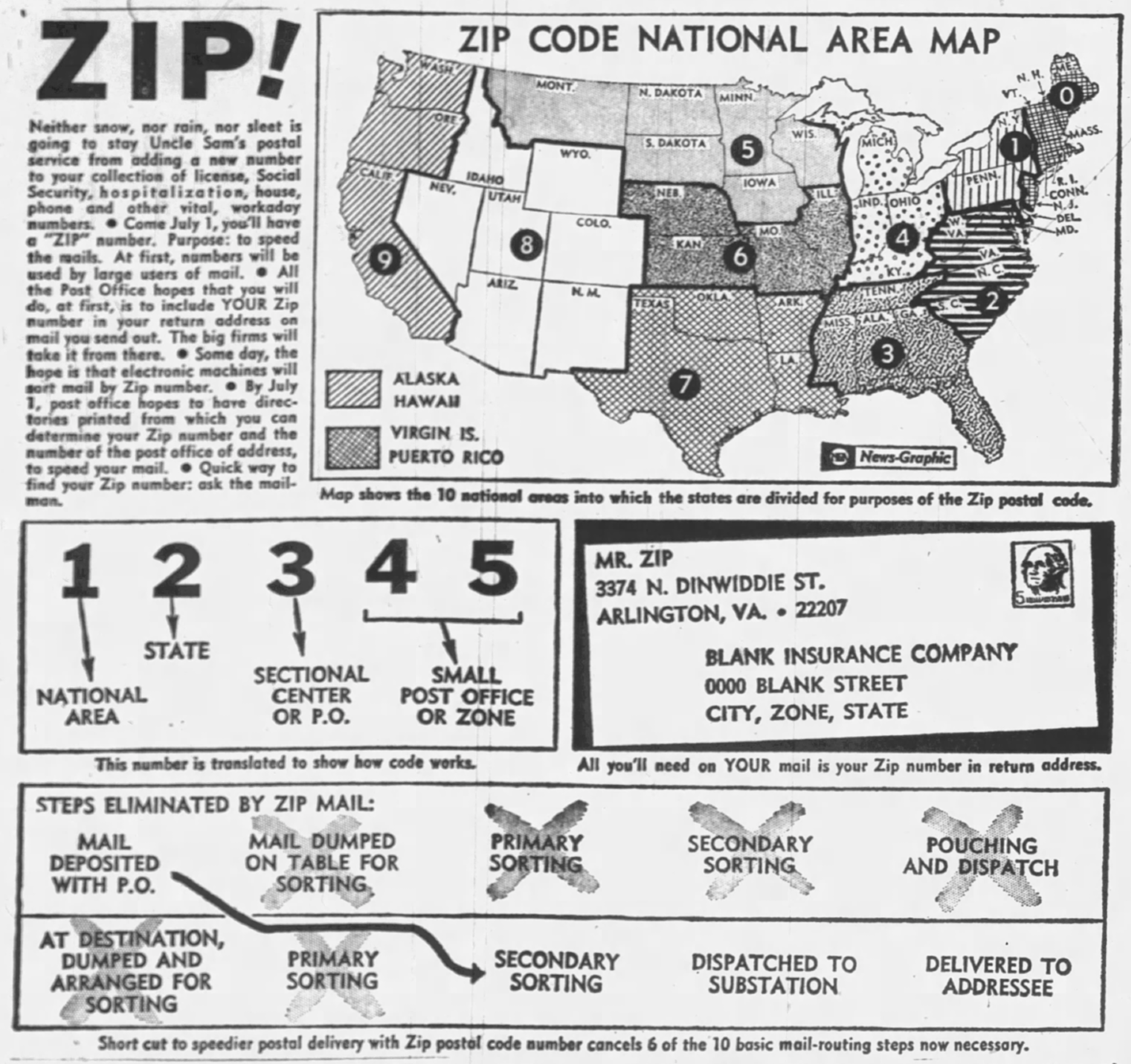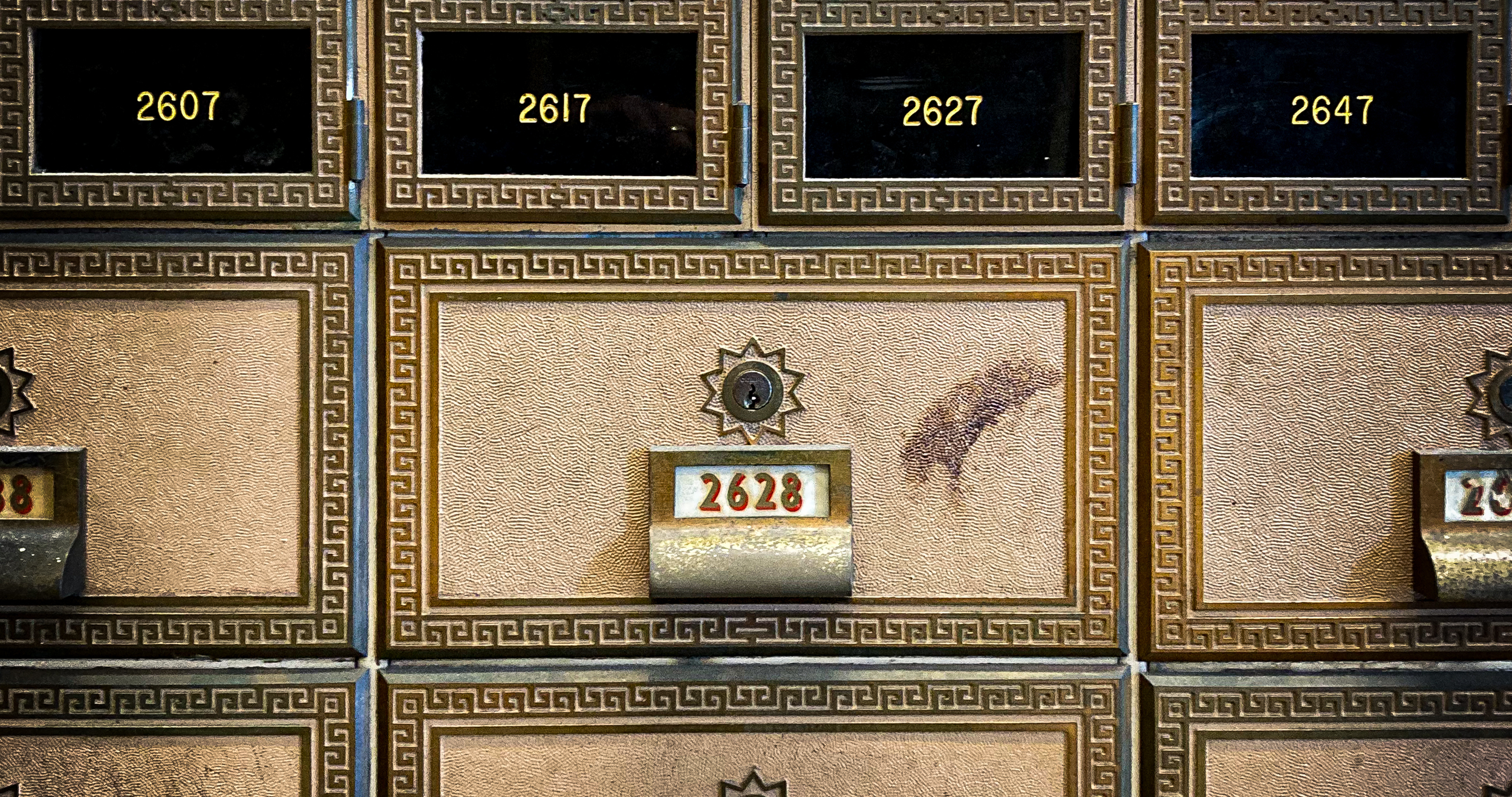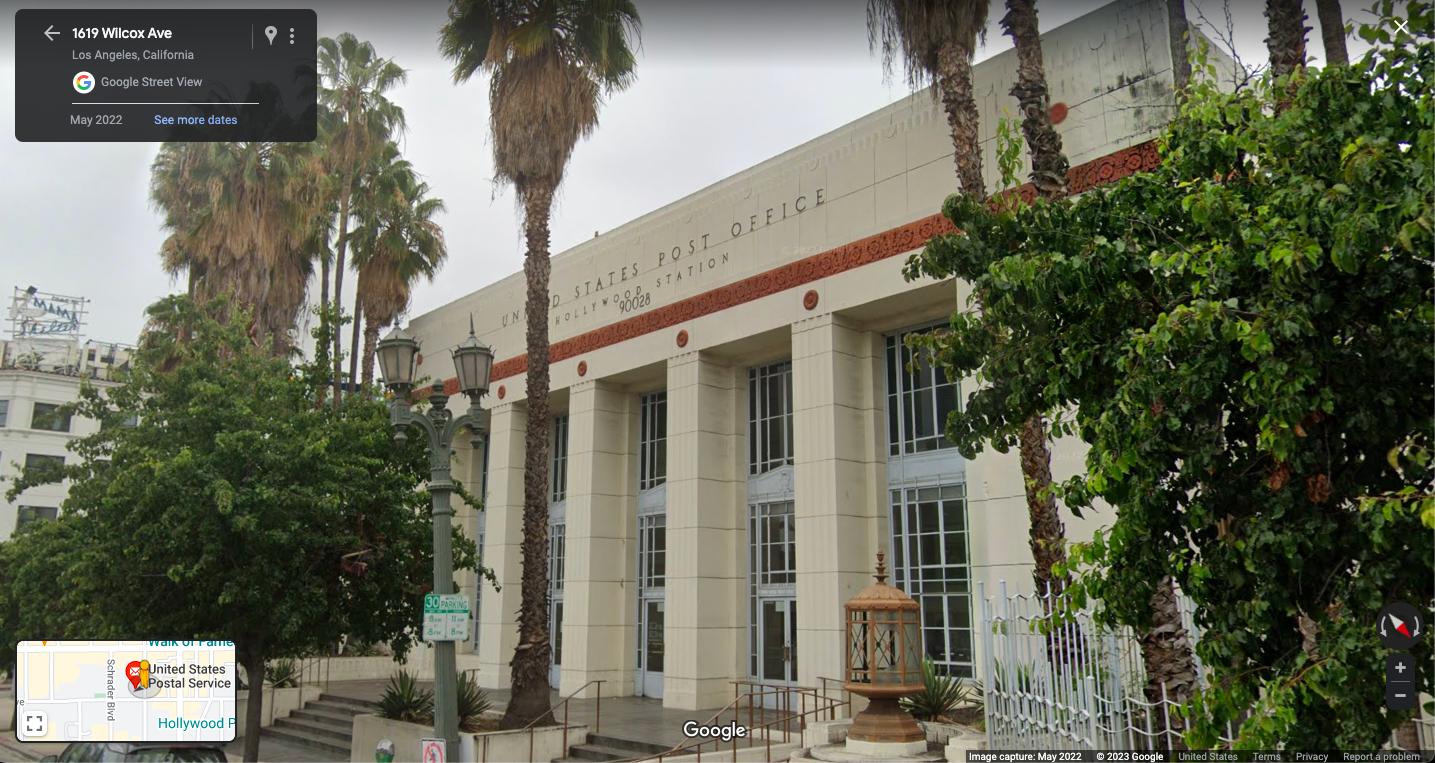Postal Codes, Addresses,
& Company Info.


The Good Time Jazz Record Company moved into the offices at 8481 Melrose Place around 1952. For the next decade, all its jackets sported this address, with a Los Angeles 46 postal code.
The two-digit 46 code dated back to the late 1940s, when Los Angeles and other large US cities installed new frameworks to govern the post-war boom in mail delivery. The City of L.A. had then divided its service area into dozens of zones, then added new codes periodically as pockets of land were developed.
1949 evidence shows 46 codes allocated, which by 1957 shot up to 66:

1949 Renie LA city atlas

1957 Thomas Bros. LA city atlas


A few changes occurred in the early 1960s.
First, the Los Angeles postal map added three additional zones. The last of these carved the existing zone 46 in two. Suddenly, Contemporary’s office at 8481 Melrose Place had a new postal code: Los Angeles 69. We can see this change having already occurred as of the 1962 Renie Atlas:



Soon after this, in July 1963, the USPS introduced a federal system of postal codes under the Zone Improvement Plan. This created five-digit codes for the entire United States. ZIP codes.
Cities’ local codes were incorporated into the national system using a uniform prefix assigned to the entire service area. Los Angeles was given 900, and in combination with the local 2-digit code, Contemporary’s full ZIP was now 90069.


Contemporary jackets began to reflect the change to Los Angeles 69 in 1963, though they did not yet use the full Los Angeles, CA 90069 that would have been 100% pukka.
Perhaps it’s because adjusting for the full zip was easy enough and, ZIP being new, things took a while to fall into place. But let’s also appreciate that there was no space in the address strip to fit the extra digits:

So the Los Angeles 69 code was standard on new titles in 1963 and 1964, but it was also flown into several banner jacket reprints that had previously used the LA46 code:


Dialing… OLive 3-1560
By the way. When I started researching Contemporary I saw this weird typo on numerous materials: OLive 3-1560. It took me a minute to recognize this was actually a phone number and — like the old Los Angeles postal codes — the lineage of this format could be directly tracked to our phone numbers of today.

first printed inner, c. 1963

CR letterhead c. 1963.
This was the 2L-5N phone number format, meaning 2 letters - 5 numbers. The two letters (in this case OL) stood for a local telephone exchange, but multiple LA telephone exchanges used the OL characters, so the first of the five digits (in this case, the digit 3) was also necessary to narrow down to the Olive exchange.

Los Angeles white pages (1950s) showing telephone exchange prefixes.

The 4 OL exchanges were differentiated by the first digit.
Of course, when dialing this number on your rotary phone, these letters corresponded to digits. OL thus translated to 65, and the 7-digit number to 653-1562. And, simply enough, you can add in the central Los Angeles 213 area code to get the full thing: (213) 653-1562.


Sure enough, that’s the number that started appearing on Contemporary materials in the late 1960s:

Beautiful. The inners above also show the five-digit ZIP arrive to Contemporary materials somewhere in the mid-late 1960s. Let’s talk about that address as it appeared on jackets.


The full five-digit zip 90069 was designed into the jackets of all new titles starting 1966. Where it appears on earlier titles, 90069 is a giveaway for a delivery (reissue) made 1966 or later.
That said, not every jacket delivered or printed after 1966 had 90069 on it. Many old jackets were in leftover stock and many designs were obviously reprinted for years without update to the postal code. There are no general rules!!


In 1980, Contemporary exited 8481 Melrose and took its recording business mobile. The 8481 address on Contemporary jackets was quickly swapped out for a P.O. Box at the Hollywood post office.
The actual PO Box that Contemporary rented can be found there today, still in service:

The actual P.O. Box 2628.

Hollywood Post Office grand opening, 1937.

What the Hollywood P.O. looks like today.
The P.O. Box address is a solid giveaway for a date floor of 1980. But some reissues delivered in the early 1980s maintained the old 8481 Melrose address, some with the LA46 postal code and others with the 90069 ZIP.
Once again, jacket inventory is important to consider— as is the re-use of existing design using the old address.